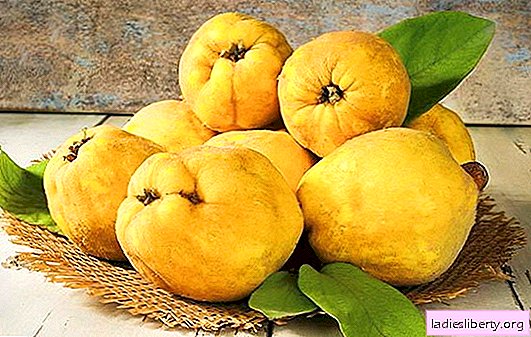
Aloe arborea (synonym: agave) is a type of succulent plant from the genus Aloe that originates from South Africa. Agave grows mainly on mountain ranges and rocks, as well as on bushes ranging from the sea coast to the mountains.
Aloe tree, like Aloe vera, is used in herbal medicine. Extracts help in healing wounds and burns. Positive effects are explained by the presence of polysaccharides, anthraquinones, C-glycosides and lectins.
The active substances responsible for the healing properties of the agave are unevenly distributed throughout the sheet.
The sheets contain a significant proportion of the water-insoluble acid resin present in the form of an emulsion.
The plant contains a large concentration of O- and C-glycosides of an anthrone, anthraquinones, a free anthron, diatron and free anthraquinones.
The content of barbaloin varies greatly among different species of aloe. A total of more than 80 essential ingredients were found in aloe using laboratory chromatographic methods.
In the main part of the leaves there is a gel containing about 99% water and 0.3% of various carbohydrates. The gel is relatively acidic: a pH of 4.4-4.7. Barbaloin is not contained in it. The main components of the carbohydrate mixture are pectins, hemicellulose, glucomannans, atsman and mannose derivatives. The most common sugar is mannose-6-phosphate.
Other substances include amino acids, lipids, sterols (lupeol, campesterol and beta-sitosterol), tannins and an enzyme. In the solid state, the gel contains 8.9% protein, 5.1% fat, 23.6% minerals, 27.8% soluble sugars and 35% polysaccharides. These polysaccharides, called glucomannans or polymanes, consist of several to several thousand units of mannose.
In invivo studies, gel, extracts or ointments with aloe have anti-inflammatory, wound healing, immunomodulating, analgesic and anti-cancer effects.
The anticarcinogenic effect is called into question, since in some studies the opposite results were obtained.
Digestive disorders
Doctor's comment:aloe treelike positively affects digestion. The ingredients of the plant are designed to prevent inflammation and ulcers, as well as to protect the mucous membranes and injuries. The plant has an antifungal, antibacterial and pH neutralizing effect in the mouth, which helps fight bad breath.
The clinical efficacy of the agave in gastrointestinal diseases has not been proven in any large randomized study. In most cases, the opposite effects are observed: diarrhea, abdominal pain and dehydration.
Cancer
Doctor's comment:the agave contains nutrients that can fight malignant rapidly dividing cells. According to a Chinese study, the active ingredient in aloe slows or stops the growth of cancer.
Some preliminary studies show that this species may be useful in the treatment of cancer, as it contains compounds that inhibit cell proliferation.
The results of a clinical study in which 240 patients were treated with an agave showed that the plant improves the effects of chemotherapy by increasing its effectiveness.
Other studies have come to diametrically opposite conclusions. Final results cannot be deduced. The plant should be able to help not only with cancer, but also with AIDS. However, some scholars consider research biased and methodologically incorrect.
Skin diseases
Doctor's comment:the gel should help in the fight against acne, eczema and dermatitis. The leaves contain toxins that significantly stimulate the skin's blood circulation. It is also believed that agave stimulates wound healing, which helps to heal sunburns, bruises and similar skin lesions more quickly. The main testimony of the agave is burns.
This species has similar healing properties to aloe vera and is commonly used for the symptomatic treatment of burns. In a scientific study conducted on laboratory rats and rabbits with induced wounds, it was proved that the speed of treatment improved with the use of agave.
According to the study, the use of the extract significantly reduces the severity of wounds compared with saline.
In addition to the healing properties, a decrease in the growth of the microbial form was found: the use of the extract effectively inhibited the bacterial growth of four types of microorganisms during the study period.
Inflammatory diseases
Doctor's comment:the anti-inflammatory and analgesic effects of aloe are one of the most well-known effects. The action is said to be comparable to cortisone, but associated with fewer side effects. Responsible for this should be phytosterols-campesterol, beta-sitosterol and lupeol.
Aloe tree contains many antioxidants, including magnesium and copper, vitamins B2, C and E, as well as anthraquinone and phenols. These substances neutralize free radicals in the body and thereby protect healthy cells. According to Spanish studies, the agave increases fibroblast growth by 6-8 times. These skin cells are responsible for the formation of collagen, which makes the skin soft and supple.
Agave: contraindications and side effects
The use on the skin against acne, eczema, dermatitis is mainly safe and does not cause side effects. Other forms of administration (e.g., capsules) can cause side effects in some people:
- diarrhea;
- malaise;
- mucosal inflammation;
- colic.
Toxic effects and the possibility of acute overdose were found with tincture. The main symptoms are sharp and severe diarrhea with all the attendant effects, including loss of fluid and potassium, as well as an imbalance of electrolytes.
The absolute contraindication of the agave is infectious or neurogenic diarrhea.
Centennial should not be prescribed to patients with inflammatory disease of the gastrointestinal tract, narrowing and obstruction of the intestines, with cramping, colic, bleeding hemorrhoids and digestive problems.
Also, the drug is forbidden to be taken by pregnant and lactating women and children under the age of 10 years. Take laxatives of this type for more than 2 weeks should not be.
As for derivatives of anthraquinone, it is mentioned that some of the substances on this basis are carcinogenic. Research on rats was published in 2013. It showed that aloe juice can increase the risk of colon cancer by 4 times.
It was found that aloe gel is not toxic when applied externally. Locally apply the plant can be up to 7 times a day. Severe cases of contact dermatitis, erythrem, or photosensitivity have been reported after application of an external gel.
Aging Oral
Doctor's comment:Aloe juice is indicated for the symptomatic treatment of constipation. Aloin, used in numerous pharmaceutical products, is toxic to the gastrointestinal tract. Patients are advised to use safer remedies, since the potential risk from the agave outweighs the benefit.
External application
Doctor's comment:at home, you need to use the right type of aloe, as some related species are poisonous.
Aloe tree is often grown as a houseplant. A systematic study of this plant began only in 1959 thanks to a Texas pharmacist Bill Coates, who developed a method for stabilizing cellulose.
In parallel, the US government officially announced the healing properties of this plant for the treatment of burns. Since then, research with aloe has been carried out actively around the world.
Aloe tree is used in medical practice to accelerate wound healing, but can be toxic when administered orally. It is forbidden to use extracts of agave without doctor's testimony, since the potential health risk outweighs the benefit. Do not engage in self-medication.











